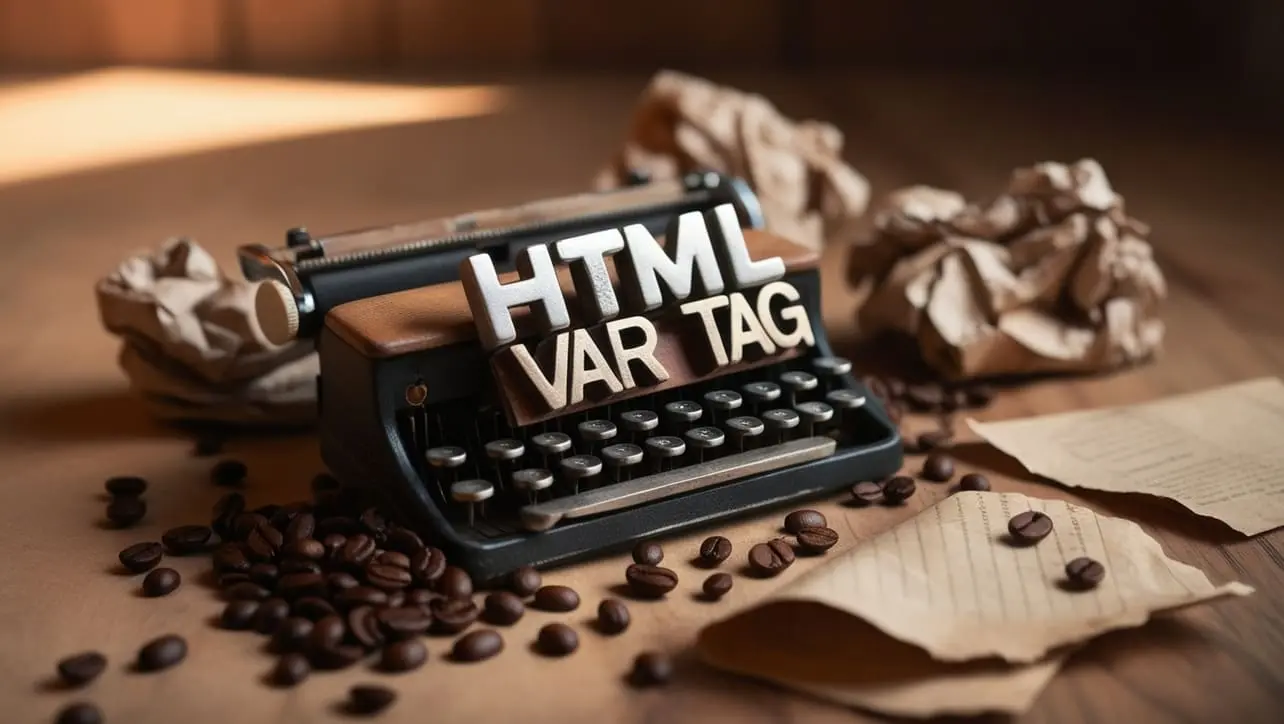
HTML Topics
- HTML Intro
- HTML Basic
- HTML Editors
- HTML CSS
- HTML Tags
- <!--...-->
- <!DOCTYPE>
- <a>
- <abbr>
- <address>
- <area>
- <article>
- <aside>
- <audio>
- <b>
- <base>
- <bdi>
- <bdo>
- <bgsound>
- <blink>
- <blockquote>
- <body>
- <br>
- <button>
- <canvas>
- <caption>
- <cite>
- <code>
- <col>
- <colgroup>
- <data>
- <datalist>
- <dd>
- <del>
- <details>
- <dfn>
- <dialog>
- <div>
- <dl>
- <dt>
- <em>
- <embed>
- <fieldset>
- <figcaption>
- <figure>
- <footer>
- <form>
- <h1> to <h6>
- <head>
- <header>
- <hgroup>
- <hr>
- <html>
- <i>
- <iframe>
- <img>
- <input>
- <ins>
- <kbd>
- <label>
- <legend>
- <li>
- <link>
- <main>
- <map>
- <mark>
- <menu>
- <meta>
- <meter>
- <nav>
- <noscript>
- <object>
- <ol>
- <optgroup>
- <option>
- <output>
- <p>
- <param>
- <picture>
- <pre>
- <progress>
- <q>
- <rp>
- <rt>
- <ruby>
- <s>
- <samp>
- <script>
- <search>
- <section>
- <select>
- <small>
- <source>
- <span>
- <strong>
- <style>
- <sub>
- <summary>
- <sup>
- <svg>
- <table>
- <tbody>
- <td>
- <template>
- <textarea>
- <tfoot>
- <th>
- <thead>
- <time>
- <title>
- <tr>
- <track>
- <u>
- <ul>
- <var>
- <video>
- <wbr>
- HTML Deprecated Tags
- HTML Events
- HTML Event Attributes
- HTML Global Attributes
- HTML Attributes
- HTML Comments
- HTML Entity
- HTML Head
- HTML Form
- HTML IndexedDB
- HTML Drag & Drop
- HTML Geolocation
- HTML Canvas
- HTML Status Code
- HTML Language Code
- HTML Country Code
- HTML Charset
- MIME Types
HTML var Tag

Photo Credit to CodeToFun
🙋 Introduction
The HTML <var> tag plays a crucial role in representing variables or placeholders within text content.
This guide will provide a comprehensive understanding of the <var> tag and how to effectively use it in your HTML documents.
🤔 What is <var> Tag?
The <var> tag is an essential HTML element designed to define variables or placeholders in mathematical or programming contexts. It is commonly used to visually distinguish variables within text.
💡 Syntax
To implement the <var> tag, enclose the variable or placeholder within the opening <var> and closing </var> tags.
<var>YourVariable</var>🧰 Attributes
While the <var> tag itself doesn't have specific attributes, it can be combined with other HTML elements or styled using CSS to enhance its visual representation.
<p>The value of <var class="highlight">x</var> in the equation is...</p>📚 Common Use Cases
Mathematical Formulas:
The
<var>tag is often employed in mathematical expressions to highlight variables or placeholders.mathematical-formulas.htmlCopied<p>The area of a circle is calculated using the formula A = π<var>r</var><sup>2</sup>.</p>Programming Code:
In programming-related content, use the
<var>tag to represent variables or placeholders within code snippets.var.htmlCopied<p>In the code snippet, <code>var <var>myVariable</var> = 42;</code> initializes a variable.</p>
🖥️ Browser Support
Understanding the compatibility of the <var> tag across different browsers is essential for delivering a consistent user experience. Here's an overview of its support:
- Google Chrome: Fully supported.
- Mozilla Firefox: Fully supported.
- Microsoft Edge: Fully supported.
- Safari: Fully supported.
- Opera: Fully supported.
- Internet Explorer: Partial support (some versions may have limitations).
Ensure you test your code in various browsers to guarantee a seamless experience for your audience.
🏆 Best Practices
- Combine with CSS for styling to ensure variables stand out in your content.
- Use in conjunction with mathematical symbols or within code snippets for clarity.
- Test your content in various browsers to ensure consistent rendering.
🎉 Conclusion
Mastering the <var> tag is essential for web developers and content creators who wish to convey mathematical or programming concepts clearly. Incorporating this tag into your HTML documents enhances the visual representation of variables, contributing to better comprehension for your audience.
👨💻 Join our Community:
Author

For over eight years, I worked as a full-stack web developer. Now, I have chosen my profession as a full-time blogger at codetofun.com.
Buy me a coffee to make codetofun.com free for everyone.
Buy me a Coffee












If you have any doubts regarding this article (HTML var Tag), please comment here. I will help you immediately.